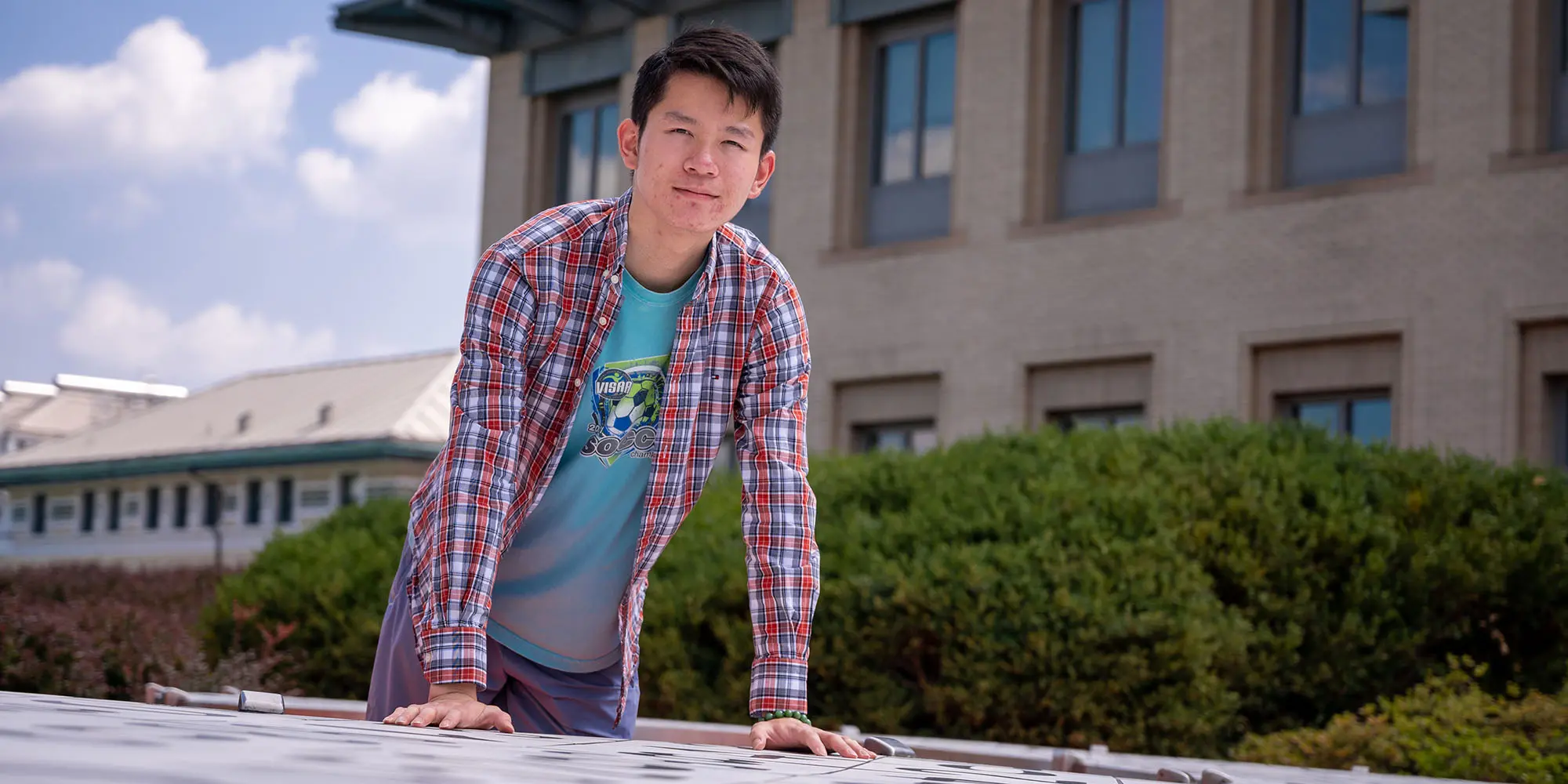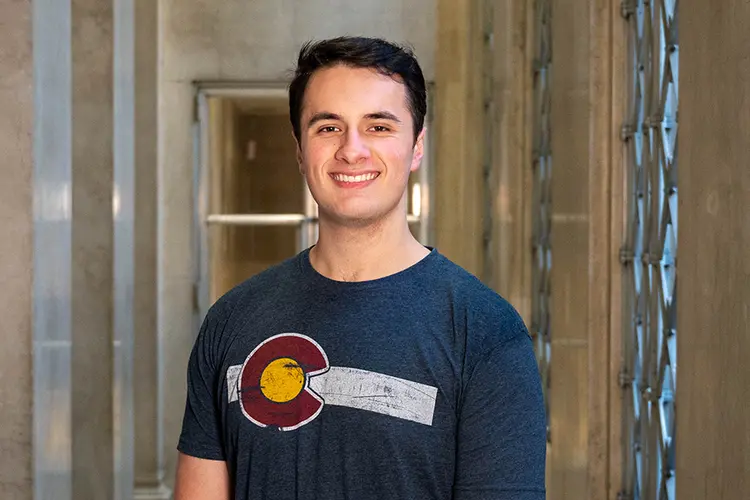
Student-Built AI Tool Licensed for Workforce Development
Media Inquiries
If the headlines are to be believed, artificial intelligence (AI) is about to make everyone's jobs obsolete. Nur Naqvi at the American Institute of AI isn't buying it.
"It's important to realize that AI's going to be used in your job, not necessarily replace your job," said Naqvi, the chief product officer at the Washington D.C.-based software company, which also runs an institute that teaches professionals about AI. "So it's going to be important for people to understand AI, not be afraid of it."
Now, thanks to an AI toolbox developed by Carnegie Mellon student Tom Tang, Naqvi can easily show professionals how AI can be used to help them in their current jobs.
Tang, a sophomore majoring in mathematical sciences(opens in new window), created the AI toolbox for his Fundamentals of Programming and Computer Science(opens in new window) class's term project. The American Institute of AI has licensed the software.
"It was really surprising that this was happening in, like, freshman year in college," Tang said.
Tang became interested in AI in high school. He taught himself AI basics watching videos online and reading books he borrowed from the library. During his junior year he published a paper on applying AI techniques on ATLAS experiment data from the Large Hadron Collider to identify the Higgs boson.
When it came time to choose a topic for his term project, it was a no-brainer.
"I really wanted to make something that was impressive to myself," Tang said. "So I made an AI toolbox. It integrates everything I know about AI, including artificial neural networks and linear and logistic regression."
Tang's toolbox incorporates these core machine learning algorithms, which teach computers to process data in a way that is inspired by the human brain. He packaged the algorithms in a simple, user-friendly interface that makes it easy to upload and analyze their data. The algorithms generate a visual representation of the data, predicting any trends and informing any decisions the user may need to make based on that data. It's also designed to withstand human handling errors.
"It's a very, very impressive project," said Michael Taylor,(opens in new window) assistant teaching professor in the Computer Science Department(opens in new window), who teaches Fundamentals of Programming and Computer Science. "For Tom, who's new to a lot of these topics, to dive in and figure out how all this stuff works and then how to package it in a way that's genuinely useful to folks in the broader world is extraordinary."
Tang's project was one of 10 selected by his professors for the end-of-semester showcase, and his classmates voted it one of the best projects of the semester. In a twist of fate, Tang's classmate, Marya Naqvi, showed the end-of-semester showcase video to her brother, Nur.
"I saw Tom's project for maybe 10 seconds, and I thought, that's very interesting," Naqvi said.
"It's finally an easy way to do hands-on AI education that's not too complex for the majority of people," he added. "So now you can have professionals who don't necessarily have the math or computer science background but who can understand these concepts and then also apply them on actual data and see the actual results."
Tang signed a licensing agreement for his AI toolbox, giving the American Institute of AI nonexclusive rights.
"Tom showed a lot of maturity and thought during the entire process," Taylor said. "Having been in the entrepreneurship space myself, I'm well aware of the fact that there are countless pitfalls and some of them are really, really sneaky."
After doing his due diligence, with a bit of guidance from Taylor, Tang licensed the toolbox to the American Institute of AI. He sent Naqvi his code, did a code review with him, and taught him how to handle the interface. Naqvi has already been using it in his classes.
"Showing how these algorithms can be used by the students, in their own job, in their own capacity is extremely beneficial," Naqvi said. "We use Tom's own examples because he included all this sample data and sample analysis."
Tang, who is from Beijing, has spent his summer in Pittsburgh updating the AI toolbox, training a simple chatbot and collaborating on a paper on quantum computing with fellow CMU students. He plans to continue pursuing his major in mathematical sciences but is looking to add a second major, possibly in computer science with a concentration in AI.
"Tom has already done great things, and I'm really excited to see what he comes up with next," Naqvi said.


